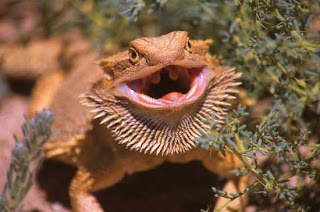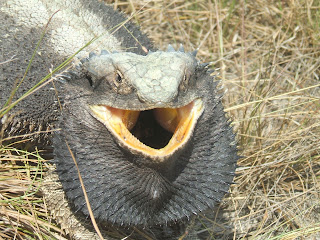Animal Wildlife | Bearded Dragon | The bearded dragon (also known as the dragon) is found naturally in Australia, but bearded dragons are kept as exotic pets in many places all around the world. Bearded dragons can grow up to 24 inches long but that is including their long tail, making the bearded dragon fairly small in body size for a lizard.
Bearded dragons feed mainly on insects, crickets and worms and like all reptiles enjoy spending their days on a rock under the sun recharging until nightfall when the bearded dragon is much more active. The bearded dragon is known to be docile and trusting yet outgoing and curious! The bearded dragon is a quite and gentle lizard and the bearded dragon is therefore a popular exotic pet for children.
The bearded dragon is a territorial lizard and should be keep in a big enough enclosure if the bearded dragon is kept as a pet. The bearded dragons diet is made up mainly of leafy greens which the bearded dragon plucks from trees and bushes.
Bearded dragons go through a period every year that is similar to a mammal's hibernation. The bearded dragon tends to become lethargic and the bearded dragon will not come out that often. The bearded dragon will also be eating less and the bearded dragon does this for a period of two to three months.
Tags: bearded dragon salmonella, bearded dragon insurance, bearded dragon respiratory infection, bearded dragon health, bearded dragon health problems, bearded dragon stress marks, bearded dragon diet chart, bearded dragon feeding schedule, bearded dragon problems, bearded dragon vitamins, bearded dragon veterinary, bearded dragon vets, juvenile bearded dragon diet, bearded dragon brumation






If you are considering becoming a beardie keeper, bearded dragon size will be a key factor in creating the proper habitat for your new pet. Bearded dragons are quite small when newly hatched, but some can grow to 26 inches long, meaning that as they grow, their home must grow with them for their comfort and health.Bearded dragon diet
ReplyDelete